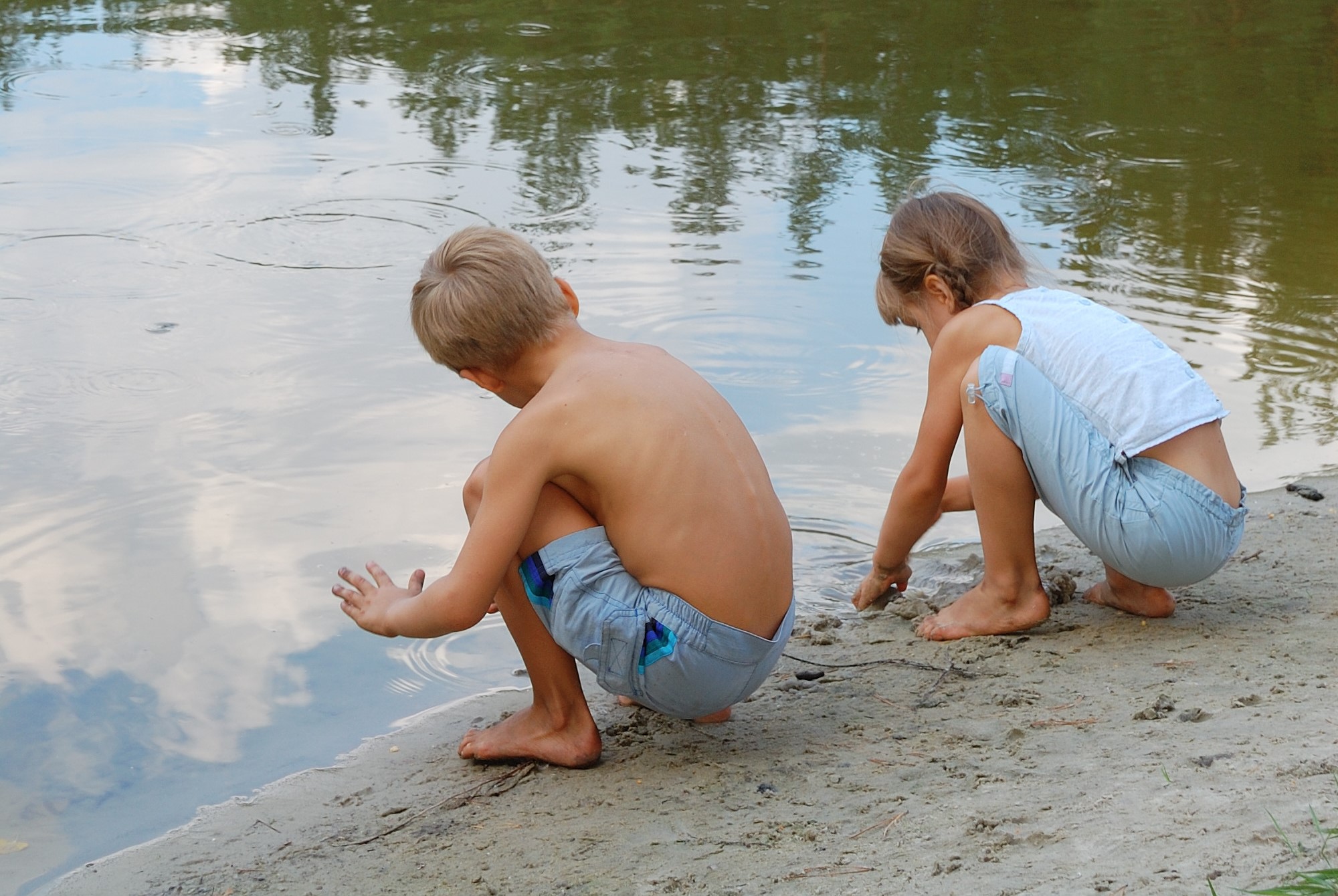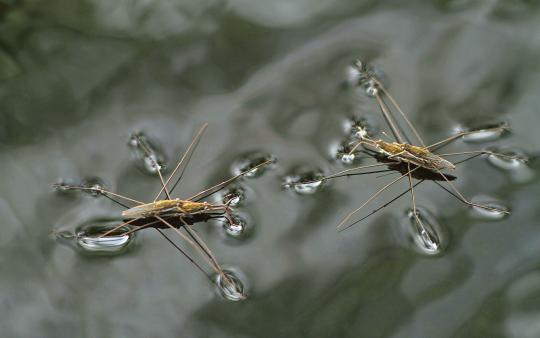Skating on ice is one thing, but skating on water? How cool would that be?! Did you know that there’s an insect that can do just that? Water striders—or pond skaters—can zoom over the surface of lakes and ponds without even getting wet!
Water striders have elegant, spindly legs that help them evenly distribute their weight. Each leg is covered with thousands of microscopic hairs containing tiny grooves that can trap air to help increase the water strider’s buoyancy and repel water. Water striders also use the surface tension of water to their advantage, navigating their world along the delicate film created by the naturally tight cohesion of water molecules on water’s surface. Water striders can “row” on top of this surface tension, using their three sets of paired legs: the middle set as oars, the backset to steer and brake, while the front legs are reserved for capturing prey on-the-go!
Tension tutorial
Take a paper clip and gently place it in a cup full of water. If it sinks, place a small piece of tissue paper on the surface, then float the paper clip on this. Carefully remove the tissue paper and the paper clip will float—this is surface tension in action. To break the surface tension, place a drop of soap in the water and the paper clip will immediately sink!
And boy are they fast! Water striders have been known to travel more than 100 body lengths per second. To put this in perspective, an average person would have to swim over 400 miles per hour to match the equivalent speed of a water strider, based on the ratio of size to speed.
If a water strider feels a sudden ripple of water, it will quickly skate towards the disturbance. If there is a morsel of food (a mosquito larvae, for example), a strider will grab hold, unfold its long proboscis (a tube-like mouthpart), jab it in its prey and suck out those yummy juices. Don’t worry, water striders don’t bite people!

Water strider meet-and-greet!
Want to invite a water strider over for a friendly hello? Just like worm fiddling, you can encourage a visit from a water strider just by rubbing two twigs together!
Instructions
Find two small, thin twigs, about 4–5 inches each. Submerge one twig vertically, about halfway under the surface of the water, making sure to hold it very still. Draw the other twig back and forth across the top part of the submerged one like a fiddler playing a jig. Your movements will create ripples that simulate a struggling insect. Don’t be surprised if a water strider or two glides over and grabs your twig!
Next time you are at a pond, stream, or lake, be on the lookout for water striders. Admire how they glide across the water without much effort. They are fascinating aquatic insects, whose graceful movements remind us that the natural world is full of dancers, if we just take the time to look!
You may also enjoy: Nurturing Your Child to be a Naturalist, Make Friends with Fireflies and Using the Five Senses to Plug into Nature.






